- Home
- Terry Pratchett
Darwin's Watch Page 10
Darwin's Watch Read online
Page 10
Rolling up Minkowski spacetime is an example of a powerful mathematical trick for building new spacetimes out of old ones: cut-and-paste. If you can cut pieces out of known spacetimes, and glue them together without distorting their metrics, then the result is also a possible spacetime. We say `distorting the metric' rather than `bending', for exactly the reason that we say that rolled-up Minkowski spacetime is not curved. We're talking about intrinsic curvature, as experienced by a creature that lives in the spacetime, not about apparent curvature as seen by some external viewer.
The rolled-up version of Minkowski spacetime is a very simple way to prove that spacetimes that obey the Einstein equations can possess CTCs - and thus that time travel is not inconsistent with currently known physics. But that doesn't imply that time travel is possible. There is a very important distinction between what is mathematically possible and what is physically feasible.
A spacetime is mathematically possible if it obeys the Einstein equations. It is physically feasible if it can exist, or could be created, as part of our own universe or an add-on. There's no very good reason to suppose that rolled-up Minkowski spacetime is physically feasible: certainly it would be hard to refashion the universe in that form if it wasn't already endowed with cyclic time, and right now very few people (other than Hindus) think that it is. The search for spacetimes that possess CTCs and have plausible physics is a search for more plausible topologies. There are many mathematically possible topologies, but, as with the Irishman giving directions, you can't get to all of them from here.
However, you can get to some remarkably interesting ones. All you need is black hole engineering. Oh, and white holes, too. And negative energy. And -
One step at a time. Black holes first. They were first predicted in classical Newtonian mechanics, where there is no limit to the speed of a moving object. Particles can escape from an attracting mass, however strong its gravitational field, by moving faster than the appropriate `escape velocity'. For the Earth, this is 7 miles per second (11 kps), and for the Sun, it is 26 miles per second (41 kps). In an article presented to the Royal Society in 1783, John Michell observed that the concept of escape velocity, combined with a finite speed of light, implies that sufficiently massive objects cannot emit light at all - because the speed of light will be lower than the escape velocity. In 1796 Pierre Simon de Laplace repeated these observations in his Exposition of the System of the World. Both of them imagined that the universe might be littered with huge bodies, bigger than stars, but totally dark.
They were a century ahead of their time.
In 1915 Karl Schwarzschild took the first step towards answering the relativistic version of the same question, when he solved the Einstein equations for the gravitational field around a massive sphere in a vacuum. His solution behaved very strangely at a critical distance from the centre of the sphere, now called the Schwarzschild radius. It is equal to the mass of the star, multiplied by the square of the speed of light, multiplied by twice the gravitational constant, if you must know.
The Schwarzschild radius for the Sun is 1.2 miles (2 km), and for the Earth 0.4 inches (1 cm) - both buried inaccessibly deep where they can't cause trouble. So it wasn't entirely clear how significant the strange mathematical behaviour was ... or even what it meant.
What would happen to a star that is so dense that it lies inside its own Schwarzschild radius?
In 1939 Robert Oppenheimer and Hartland Snyder showed that it would collapse under its own gravitational attraction. Indeed a whole portion of spacetime would collapse to form a region from which no matter, not even light, could escape. This was the birth of an exciting new physical concept. In 1967 John Archibald Wheeler coined the term black hole, and the new concept was christened.
How does a black hole develop as time passes? An initial clump of matter shrinks to the Schwarzschild radius, and then continues to shrink until, after a finite time, all the mass has collapsed to a single point, called a singularity. From outside, though, we can't observe the singularity: it lies beyond the `event horizon' at the Schwarzschild radius, which separates the observable region, from which light can escape, and the unobservable region where the light is trapped.
If you were to watch a black hole collapse from outside, you would see the star shrinking towards the Schwarzschild radius, but you'd never see it get there. As it shrinks, its speed of collapse as seen from outside approaches that of light, and relativistic timedilation implies that the entire collapse takes infinitely long when seen by an outside observer. The light from the star would shift deeper and deeper into the red end of the spectrum. The name should be `red hole'.
Black holes are ideal for spacetime engineering. You can cut-andpaste a black hole into any universe that has asymptotically flat regions, such as our own.[1] This makes black hole topology physically plausible in our universe. Indeed, the scenario of gravitational collapse makes it even more plausible: you just have to start with a big enough concentration of matter, such as a neutron star or the centre of a galaxy. A technologically advanced society could build black holes.
A black hole doesn't possess CTCs, though, so we haven't achieved time travel. Yet. However, we're getting close. The next step uses the time-reversibility of Einstein's equations: to every solution there corresponds another that is just the same, except that time runs backwards. The time reversal of a black hole is called a white hole. A black hole's event horizon is a barrier from which no particle can escape; a white hole's event horizon is one into which no particle can fall, but from which particles may emerge at any moment. So, seen from the outside, a white hole would appear as the sudden explosion of a star's worth of matter, coming from a time-reversed event horizon.
White holes may seem rather strange. It makes sense for an initial concentration of matter to collapse, if it is dense enough, and thus to form a black hole; but why should the singularity inside a white hole suddenly decide to spew forth a star, having remained unchanged since the dawn of time? Perhaps because time runs backwards inside a white hole, so causality runs from future to past? Let's just agree that white holes are a mathematical possibility, and notice that they too are asymptotically flat. So if you knew how to make one, you could glue it neatly into your own universe, too.
Not only that: you can glue a black hole and a white hole together. Cut them along their event horizons, and paste along these two horizons. The result is a sort of tube. Matter can pass through the tube
[1] This is a mathematician's way of saying that you can put a black hole anywhere you want. (Or, like a gorilla in a Mini, it can go anywhere it wants.)
in one direction only: into the black hole and out of the white. It's a kind of matter-valve. The passage through the valve follows a timelike curve, because material particles can indeed traverse it.
Both ends of the tube can be glued into any asymptotically flat region of any spacetime. You could glue one end into our universe, and the other end into somebody else's; or you could glue both ends into ours - anywhere you like except near a concentration of matter. Now you've got a wormhole. The distance through the wormhole is very short, whereas that between the two openings, across normal spacetime, can be as big as you like.
A wormhole is a short cut through the universe. But that's matter-transmission, not time travel. Never mind: we're nearly there.
The key to wormhole time travel is the notorious twin paradox, pointed out by the physicist Paul Langevin in 1911. Recall that in relativity, time passes more slowly the faster you go, and stops altogether at the speed of light. This effect is known as time dilation. We quote from The Science of Discworld:
Suppose that Rosencrantz and Guildenstem are born on Earth on the same day. Rosencrantz stays there all his life, while Guildenstem travels away at nearly lightspeed, and then turns round and comes home again. Because of time dilation, only one year (say) has passed for Guildenstern, whereas 40 years have gone by for Rosencrantz. So Guildenstern is now 39 years younger than his twin brother.
In 1988 Michael Morris, Kip Thorne, and Ulvi Yurtsever realised that combining a wormhole with the twin paradox yields a CTC. The idea is to leave the white end of the wormhole fixed, and to zigzag the black one back and forth at just below the speed of light. As the black end zigzags, time dilation comes into play, and time passes more slowly for an observer moving with that end. Think about world-lines that join the two wormholes through normal space, so that the time experienced by observers at each end are the same. At first those lines are almost horizontal, so they are not timelike, and it is not possible for material particles to proceed along them. But as time passes, the line gets closer to the vertical, and eventually it becomes timelike. Once this `time barrier' is crossed, you can travel from the white end of the wormhole to the black through normal space - following a timelike curve. Because the wormhole is a short cut, you can do so in a very short period of time, effectively travelling instantly from the black end to the corresponding white one. This is the same place as your starting point, but in the past.
You've travelled in time.
By waiting, you can close the path into a CTC and end up at the same place and time that you started from. Not back to the future, but forward to the past. The further into the future your starting point is, the further back in time you can travel from that point. But there's one disadvantage of this method: you can never travel back past the time barrier, and that occurs some time after you build the wormholes. No hope of going back to hunt dinosaurs. Or to tread on Cretaceous butterflies.
Could we really make one of these devices? Could we really get through the wormhole?
There are other time machines based on the twin paradox, but all of them are limited by the speed of light. They would work better, and perhaps be easier to build and operate, if you could follow Star Trek and engage your warp drive, travelling faster than light.
But relativity forbids that, right?
Wrong.
Special relativity forbids that. General relativity, it turns out, permits it. The amazing thing is that the way it permits it turns out to be standard SF gobbledegook, invoked by innumerable writers who knew about relativistic limitations but still wanted their starships to travel faster than light. `Relativity forbids matter travelling faster than light,' they would incant, `but it doesn't forbid space travelling faster than light.' Put your starship in a region of space, and leave it stationary relative to that region. No violation of Einstein there. Now move the entire region of space, starship inside, with superluminal (faster-than-light) speed. Bingo!
Ha-ha, most amusing. Except ...
In the context of general relativity, that's exactly what Miguel Alcubierre Moya came up with in 1994. He proved that there exist solutions of Einstein's field equations involving a local `warping' of spacetime to form a mobile bubble. Space contracts ahead of the bubble and expands behind it. Put a starship inside the bubble, and it can 'surf' a gravitational wave, cocooned inside a static shell of local spacetime. The speed of the starship relative to the bubble is zero. Only the bubble's boundary moves, and that's just empty space.
The SF writers were right. There is no relativistic limit to the speed with which space can move.
Warp drives have the same drawback as wormholes. You need exotic matter to create the gravitational repulsion needed to distort spacetime in this unusual way. Other schemes for warp drives have been proposed, which allegedly overcome this obstacle, but they have their own drawbacks. Sergei Krasnikov noticed one awkward feature of Alcubierre's warp drive: the inside of the bubble becomes causally disconnected from the front edge. The starship's captain, inside the bubble, can't steer it, and she can't even turn it on or off. He proposed a different method, a 'superluminal highway'. On the outward trip, the starship travels below lightspeed and leaves a tube of distorted spacetime behind it. On the way back, it travels faster than light along the tube. The superluminal highway also needs negative energy; in fact, Ken Olum and others have proved that any type of warp drive does.
There are limits to the lifetime of any given amount of negative energy. For wormholes and warp drives these limits imply that such structures must either be very small, or else the region of negative energy must be extremely thin. For example, a wormhole whose mouth is three feet (1m) across must confine its negative energy to a band whose thickness is one millionth of the diameter of a proton. The total negative energy required would be equivalent to the total output (in positive energy) of 10 billion stars for one year. If the mouth were one light year across, then the thickness of the negative energy band would still be smaller than a proton, and now the negative energy requirement would be that of 10 quadrillion stars.
Warp drives, if anything, are worse. To travel at 10 times lightspeed (a mere Star Trek Warp Factor 2) the thickness of the bubble's wall must be 10-32 metres. If the starship is 200 yards (200m) long, the energy required to make the bubble has to be 10 billion times the mass of the known universe.
Engage.
Roundworld narrativium can sometimes be documented. When Ronald Mallett was ten years old his 33-year-old father died of heart failure, brought on by drinking and smoking. `It completely devastated me,' he is reported to have said.' Soon after, he read Wells's The Time
[1] Michael Brooks, `Time Twister', New Scientist, 19 May 2001, 27-9.
Machine. And he reasoned that `If I could build a time machine, I might be able to warn him about what was going to happen.'
The childish idea faded, but the interest in time travel did not. As an adult, Mallett invented an entirely new type of time machine, one that uses bent light.
Morris and Thorne bent space to make a wormhole using matter. Mass is curved space. Levi-Civita bent space using magnetism. Magnetism has energy, energy is (so Einstein tells us) mass. Mallett prefers to bend space using light. Light, too, has energy. So it can act like mass. In 2000, he published a paper on the deformation of space by a circular beam of light. Then it hit him. If you can deform space, you ought to be able to deform time too. And his calculations showed that a ring of light could create a ring of time - a CTC.
With a Mallett bent-light time machine, you can walk into your past. A time traveller makes his or her way into the closed loop of light, space, and time. Walking round the loop has the same effect as moving backwards in time. The more times he walks round the loop, the further back he goes, tracing out a helical world-line. When he has gone sufficiently far into his past, he exits the loop. Easy.
Yes, but ... we've been here before. It takes huge amounts of energy to make a circular beam of light.
That's true ... unless you can slow the light down. A ring of really slow light, Discworld-speed, like that of sound on Roundworld, is much easier to make. The reason is that as light slows down, it gains inertia. This gives it more energy, and the warping effect is far greater for less effort on the part of the builder.
Relativity tells us that the speed of light is constant - in a vacuum. In other media, light slows down; this is why glass refracts light, for example. In the right medium, light can be slowed to walking pace, or even stopped altogether. Experiments by Lene Hau demonstrated this effect in 2001, using a medium known as a Bose-Einstein condensate. This is a furious, degenerate form of matter, occurring at temperatures near absolute zero; it consist of lots of atoms in exactly the same quantum state, forming a 'superfluid' with zero viscosity.
So maybe Wells's time traveller could have included some refrigeration equipment and a laser in his machine. But a Mallett bent-light time machine suffers from the same limita
tion as a wormhole one. You can't travel back to any time before the machine was constructed.
Wells was probably right to eliminate that encounter with a giant hippopotamus.
These are purely relativistic time machines, but the universe has quantum features too, and these should be taken into account. The search for a unification of relativity and quantum theory - respectably known as `quantum gravity' and often derided as a Theory of Everything - has turned up a beautiful mathematical proposal, string theory. In this theory, instead of fundamental particles being points, they are vibrating multidimensional loops. The best-known version uses six-dimensional loops, so its model of spacetime is really tendimensional. Why has no one noticed? Perhaps because the extra six dimensions are curled up so tightly that no one has observed them - very possibly, can observe them. Or perhaps - the Irishman again - we can't go that way from here.
Many physicists hope that string theory, as well as unifying relativity and quantum mechanics, will also supply a proof of Hawking's chronology protection conjecture - that the universe conspires to keep events happening in the same temporal order. In this connection, there is a five-dimensional string-theoretic rotating black hole called a BMPV [1] black hole. If this rotates fast enough, it has CTCs outside the black hole region. Theoretically, you can build one from gravitational waves and esoteric string-theoretic gadgets called 'D-branes'.

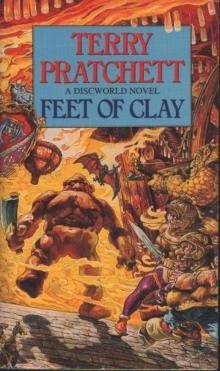 Feet of Clay
Feet of Clay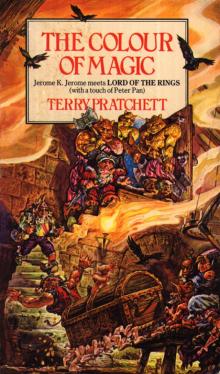 The Color of Magic
The Color of Magic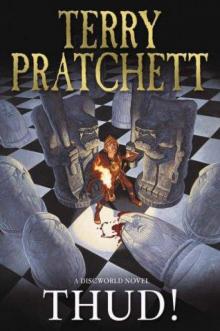 Thud!
Thud! Good Omens: The Nice and Accurate Prophecies of Agnes Nutter, Witch
Good Omens: The Nice and Accurate Prophecies of Agnes Nutter, Witch I Shall Wear Midnight
I Shall Wear Midnight Mort
Mort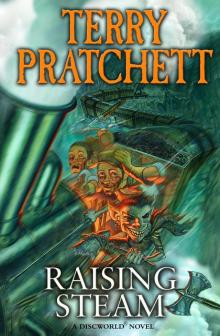 Raising Steam
Raising Steam Guards! Guards!
Guards! Guards! Equal Rites
Equal Rites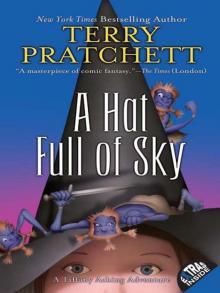 A Hat Full of Sky
A Hat Full of Sky The Light Fantastic
The Light Fantastic Mrs Bradshaw's Handbook
Mrs Bradshaw's Handbook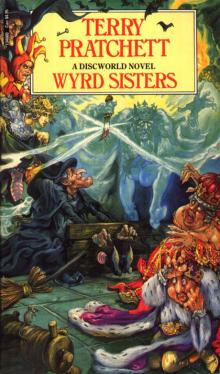 Wyrd Sisters
Wyrd Sisters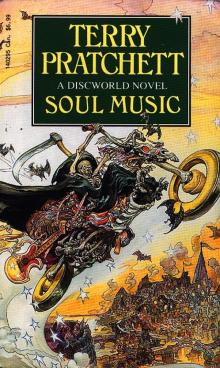 Soul Music
Soul Music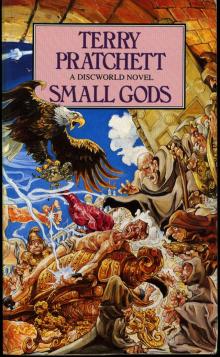 Small Gods
Small Gods Sourcery
Sourcery Reaper Man
Reaper Man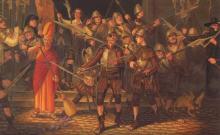 Night Watch
Night Watch Lords and Ladies
Lords and Ladies The Fifth Elephant
The Fifth Elephant Monstrous Regiment
Monstrous Regiment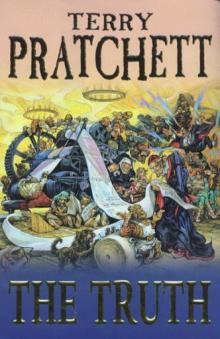 The Truth
The Truth Witches Abroad
Witches Abroad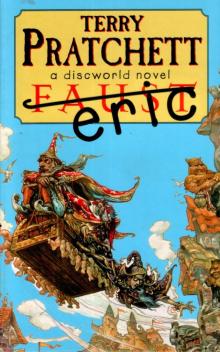 Eric
Eric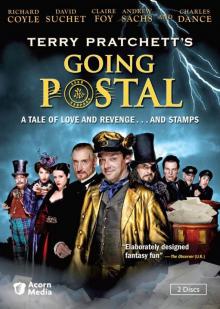 Going Postal
Going Postal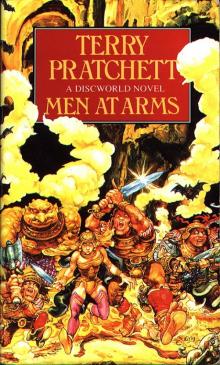 Men at Arms
Men at Arms Jingo
Jingo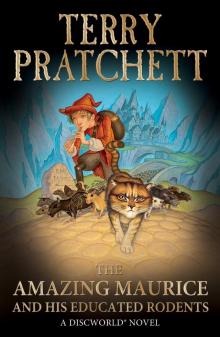 The Amazing Maurice and His Educated Rodents
The Amazing Maurice and His Educated Rodents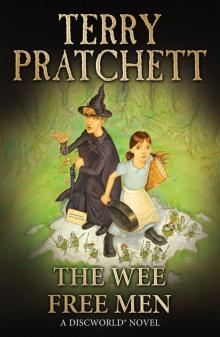 The Wee Free Men
The Wee Free Men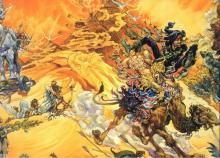 Pyramids
Pyramids Wintersmith
Wintersmith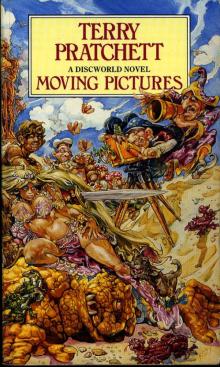 Moving Pictures
Moving Pictures Carpe Jugulum
Carpe Jugulum Interesting Times
Interesting Times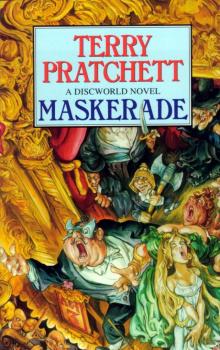 Maskerade
Maskerade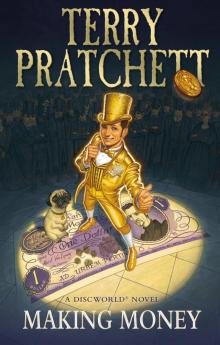 Making Money
Making Money The Shepherd's Crown
The Shepherd's Crown Hogfather
Hogfather Troll Bridge
Troll Bridge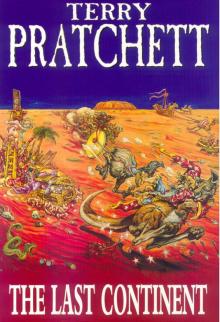 The Last Continent
The Last Continent The Sea and Little Fishes
The Sea and Little Fishes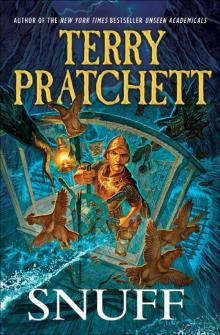 Snuff
Snuff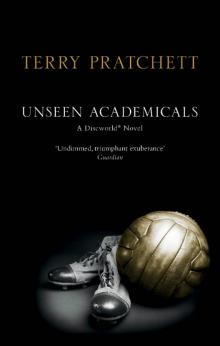 Unseen Academicals
Unseen Academicals Guards! Guards! tds-8
Guards! Guards! tds-8 Jingo d-21
Jingo d-21 Turtle Recall: The Discworld Companion ... So Far
Turtle Recall: The Discworld Companion ... So Far The Fifth Elephant d-24
The Fifth Elephant d-24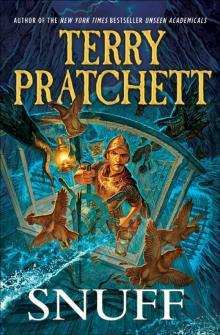 Discworld 39 - Snuff
Discworld 39 - Snuff The Long War
The Long War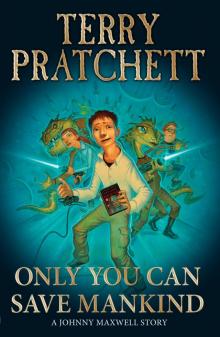 Only You Can Save Mankind
Only You Can Save Mankind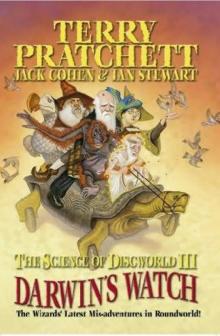 The Science of Discworld III - Darwin's Watch tsod-3
The Science of Discworld III - Darwin's Watch tsod-3 A Blink of the Screen: Collected Short Fiction
A Blink of the Screen: Collected Short Fiction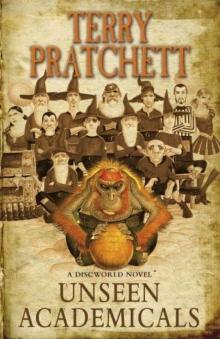 Unseen Academicals d-37
Unseen Academicals d-37 Wings
Wings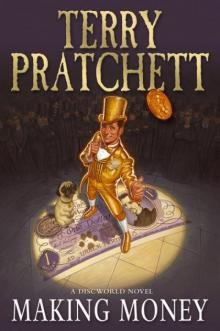 Making Money d-36
Making Money d-36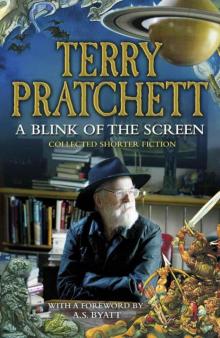 A Blink of the Screen
A Blink of the Screen Johnny and the Bomb
Johnny and the Bomb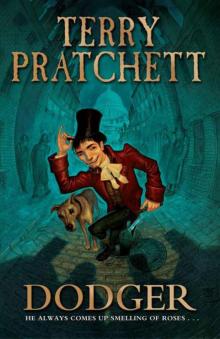 Dodger
Dodger Strata
Strata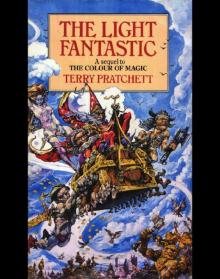 Discworld 02 - The Light Fantastic
Discworld 02 - The Light Fantastic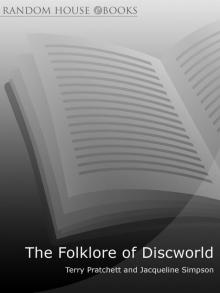 The Folklore of Discworld
The Folklore of Discworld The Science of Discworld
The Science of Discworld The Unadulterated Cat
The Unadulterated Cat Raising Steam: (Discworld novel 40) (Discworld Novels)
Raising Steam: (Discworld novel 40) (Discworld Novels) The World of Poo
The World of Poo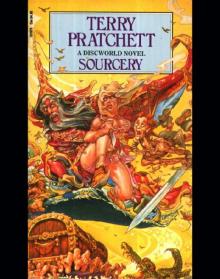 Discworld 05 - Sourcery
Discworld 05 - Sourcery The Witch's Vacuum Cleaner: And Other Stories
The Witch's Vacuum Cleaner: And Other Stories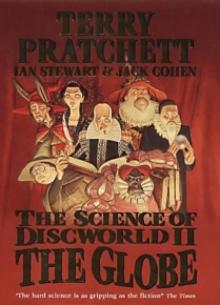 The Science of Discworld II - The Globe tsod-2
The Science of Discworld II - The Globe tsod-2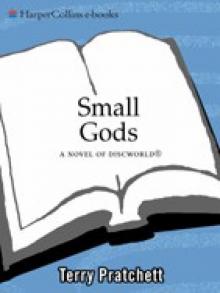 Small Gods: Discworld Novel, A
Small Gods: Discworld Novel, A Men at Arms tds-15
Men at Arms tds-15 Tama Princes of Mercury
Tama Princes of Mercury The Last Hero (the discworld series)
The Last Hero (the discworld series)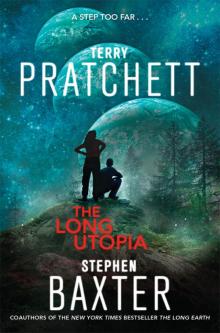 The Long Utopia
The Long Utopia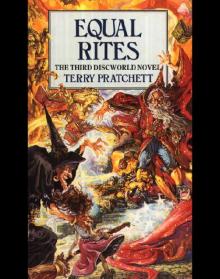 Discworld 03 - Equal Rites
Discworld 03 - Equal Rites Terry Pratchett - The Science of Discworld
Terry Pratchett - The Science of Discworld The Long Earth
The Long Earth The Carpet People
The Carpet People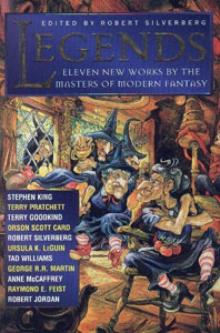 The Sea and Little Fishes (discworld)
The Sea and Little Fishes (discworld)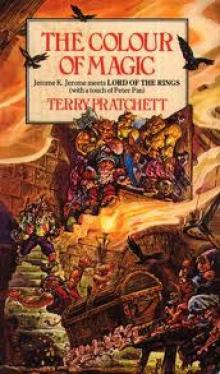 The Colour of Magic
The Colour of Magic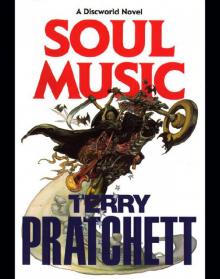 Discworld 16 - Soul Music
Discworld 16 - Soul Music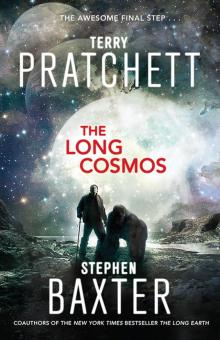 The Long Cosmos
The Long Cosmos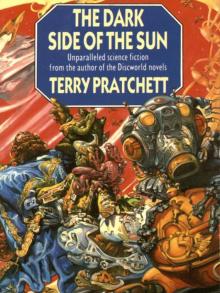 The Dark Side of the Sun
The Dark Side of the Sun Monstrous Regiment tds-28
Monstrous Regiment tds-28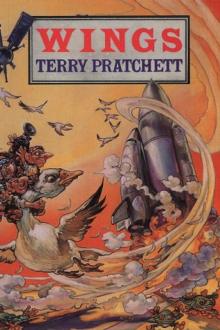 The Bromeliad 3 - Wings
The Bromeliad 3 - Wings Dragons at Crumbling Castle: And Other Stories
Dragons at Crumbling Castle: And Other Stories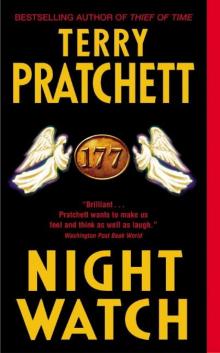 Night Watch tds-27
Night Watch tds-27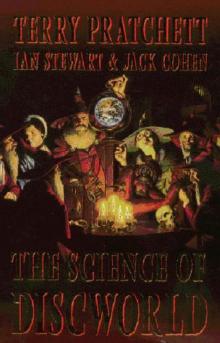 The Science of Discworld I tsod-1
The Science of Discworld I tsod-1 The Bromeliad 1 - Truckers
The Bromeliad 1 - Truckers The Science of Discworld Revised Edition
The Science of Discworld Revised Edition The Abominable Snowman
The Abominable Snowman Father Christmas’s Fake Beard
Father Christmas’s Fake Beard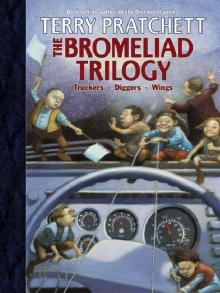 The Bromeliad Trilogy
The Bromeliad Trilogy A Slip of the Keyboard
A Slip of the Keyboard The Wee Free Men d(-2
The Wee Free Men d(-2 Johnny and the Dead
Johnny and the Dead Mrs Bradshaw's Handbook (Discworld Novels)
Mrs Bradshaw's Handbook (Discworld Novels)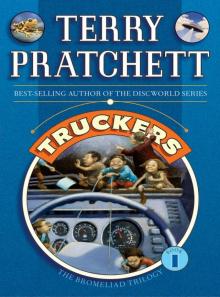 Truckers
Truckers The Amazing Maurice and His Educated Rodents d(-1
The Amazing Maurice and His Educated Rodents d(-1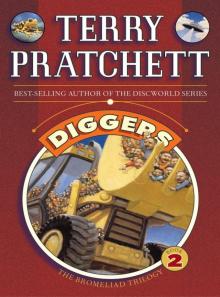 Diggers
Diggers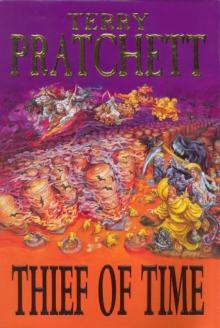 Thief of Time tds-26
Thief of Time tds-26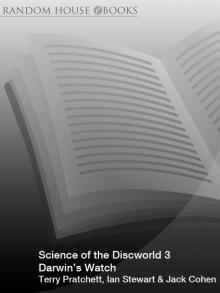 Science of Discworld III
Science of Discworld III Dragons at Crumbling Castle
Dragons at Crumbling Castle Nation
Nation Darwin's Watch
Darwin's Watch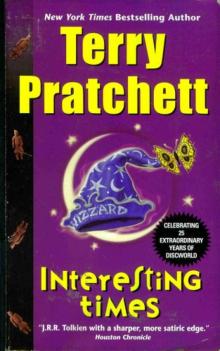 Interesting Times d-17
Interesting Times d-17 The Bromeliad 2 - Diggers
The Bromeliad 2 - Diggers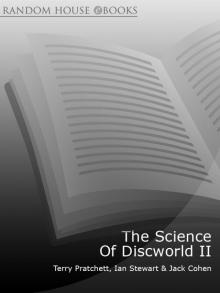 The Science of Discworld II
The Science of Discworld II